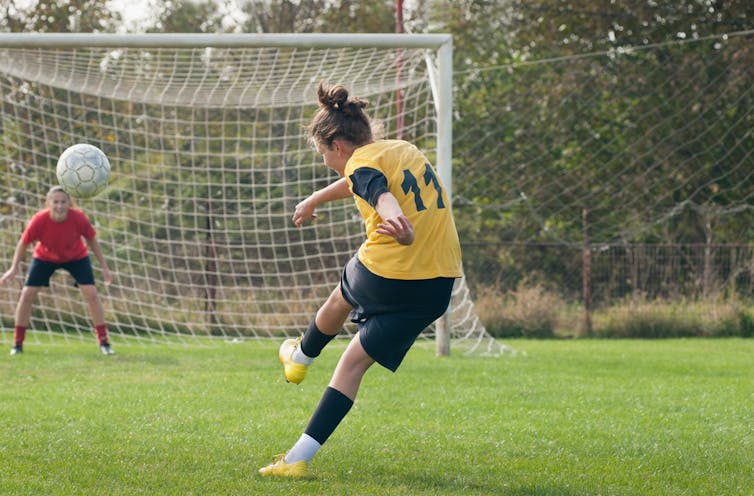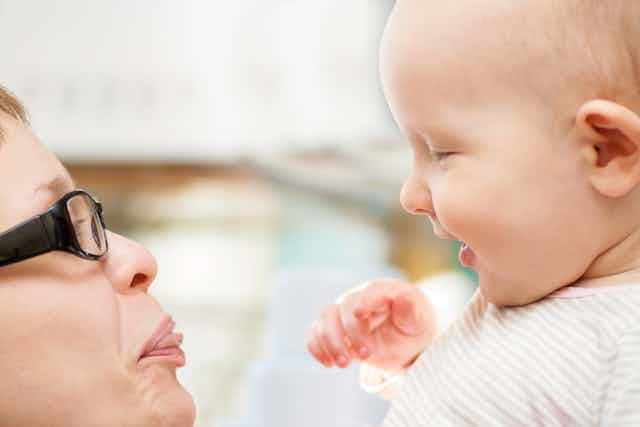Imitation is a key part of the way humans learn. We can pick up new skills by observing others: how to tie shoelaces or hold a pencil in school, how to hit a tennis serve or swing a putter down the country club, or how to hunt and fish when left to fend in the wilderness. Throughout human history, the capacity to learn through imitation may have helped our species thrive.
At the same time, imitation appears to act as a form of “social glue”: we tend to like those who imitate us, and unconsciously imitate the people we like. Studies suggest that this can have surprising effects on our social interactions. Being imitated can increase the trust you have in a total stranger, prompt you to give more to charity, and see you leaving a bigger tip at the end of your meal.
Imitating others seems easy. Young children can learn how to play a game by watching their peers. As adults, we can readily copy the gestures locals use in a foreign country. But the ease with which we can copy each other hides the complexities involved in translating the actions we see into actions we can do ourselves.
Consider the challenge posed by imitating someone’s facial expression when we return a smile. To communicate the right message, we need to match a facial expression that is “seen-but-unfelt” (their smile) with a corresponding action that is “felt-but-unseen” (our smile). Getting this translation wrong – for instance, returning a smile with a frown – could have unintended social consequences. Scientists therefore consider imitation to be a sophisticated cognitive achievement, and for many years thought that the capacity to do it was unique to humans and other great apes.
Stick out your tongue
So where does this ability to imitate come from? In an influential series of experiments conducted in the 70s and 80s, renowned developmental psychologists Andrew Meltzoff and M Keith Moore presented newborn infants – many just a few hours old – with adult models protruding their tongues and making different types of facial gestures, and recorded how often the babies reproduced each movement.
Infants appeared to produce more of a particular gesture when it matched the one being performed by the model – as if the infants were copying what they saw. Since newborns have no opportunity to learn about the appearance of their expressions, these findings suggested a remarkable possibility: we may be born with an innate neural circuit that allows us to translate observed actions into the motor commands we need to replicate them. Natural selection may have “hardwired” imitation into our genes. Similar experiments have since been attempted with other primate species.
Reports of neonatal imitation took the scientific community by storm, gaining widespread media coverage. As well as prompting much excitement, however, the results were also the source of huge controversy. For decades, sceptics have argued that studies only prove one thing for certain: that infants tend to stick out their tongues more when an adult model protrudes their tongue. But infants also stick out their tongue when engaged and excited – by music, tactile stimulation and colourful displays – making this behaviour notoriously difficult to interpret.
Learning to imitate
A recent study published in Current Biology by psychologist Janine Oostenbroek and colleagues describes the most rigorous, systematic test of newborns’ imitation reported to date. Their results provide decisive evidence against the idea that newborns are born with the ability to imitate.
The researchers exposed 106 infants, each in their first week of life, to a wide range of actions made by adults such as mouth opening, happy and sad expressions, or the extension of an index finger. Across all the actions, the researchers found no evidence that infants produced matching actions more often than non-matching ones. Once again, infants did stick out their tongues when they saw an adult doing so, but they did so at a similar rate when observing an opening mouth or a sad face, highlighting how easy it is to mistake this behaviour for imitation.
Rather than being born with an innate ability to imitate, it therefore appears that human infants actually learn to imitate.
And our parents may start teaching us to imitate long before we encounter mirrors. While newborns may not imitate their caregivers, caregivers often imitate newborns. This behaviour is often so natural and intuitive that adults often fail to realise they’re doing it. These early episodes of correlated “doing” and “seeing”, where infants see someone else perform the same action they’re producing, may help them learn the correspondences needed for imitation.
Later in life, many of our social rituals – dancing together, team sports, sharing meals – may serve to ingrain imitative behaviours further, giving us more correlated experience of performing an action and seeing the same movements performed by others.

So it appears that imitation is a product of the way we interact with one another. This raises the possibility that other species may be able to acquire the capacity for imitation given the right kind of social environment. Startling support for this view came from experiments in the early 1990s by Michael Tomasello, who observed that chimpanzees raised in the wild are unable to imitate, while those reared by humans often acquire this ability. Controlled experiments confirm that several other species, including dogs, can also learn to imitate in environments rich in regular, matching feedback provided by humans.
Learning that an important human trait is not genetically hardwired shouldn’t cause concern. Instead, the new findings of Oostenbroek and colleagues suggest that cultural forces can profoundly shape our psychology. Many of the abilities that define us may not reside in our DNA, but may instead have their roots in the societies around us.

